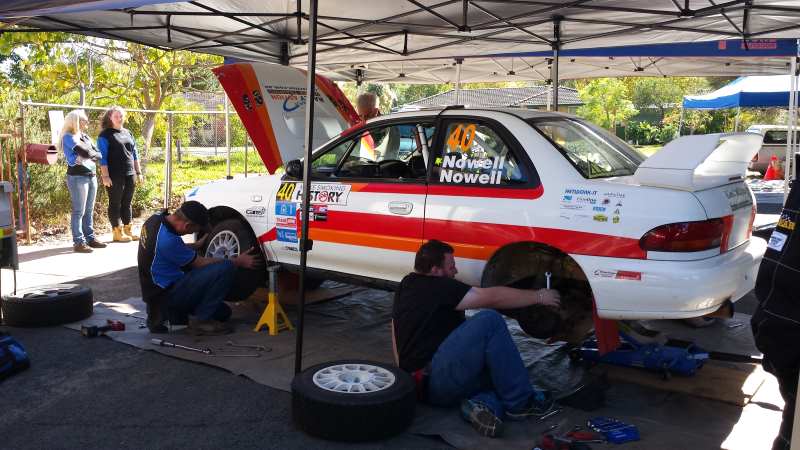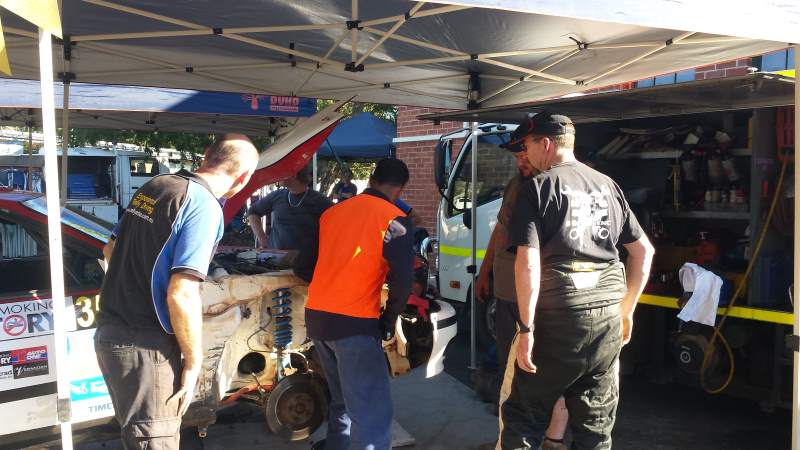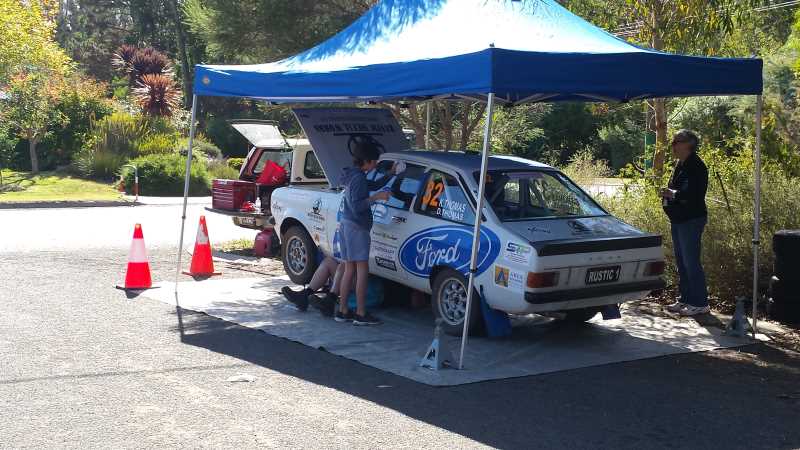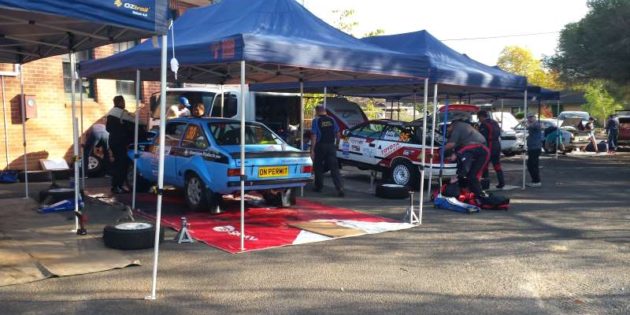Rally Service
It seems such a plain term yet it holds such a crucial part in any rally. Without rally service, competitors, teams and organisers would find it difficult to run an event. Service is a break where cars and competitors can recharge between competitive sections of an event.
What is service?
The easiest way to think about rally service is to imagine a pit stop in a circuit race. Well maybe not, as there are many differences. Sure there may be a few people working on a car (called a service crew) however that’s where the similarities end. Service has set time allowed, may move from place to place and some mechanical component replacements may be controlled.
What happens in service?
Well obviously the cars are taken care of. Inspections, adjustments and repairs are also completed. The work may be minor like checking bolts are tight or cleaning windows. It may be major like replacing a gearbox, a turbo or fixing accident damage. In some cases refuelling happens in rally service too. Drivers and navigators also have an opportunity to grab a bite to eat and recharge between stages.

Fixed time
Even before an event starts everyone knows the times for each service. Every rally has a schedule and included are the service times for each car. If we’re being accurate there are actually two times for each service. The first is the time of day, say 12:33PM, the second is the time allowed, say 20 minutes. So in this example car 1 will book in at exactly 12:33PM, has 20 minutes to complete service and book out.
Early
If everything is completed early the car still needs to stay in service until the exact time it is due out. Good news if everything is going to plan, just wait until the right time and off you go. Book out early and the team receive a time penalty.
Late
What happens if a repair takes longer than the allotted time? There’s a function included in the event called late time that all competitors have. Say it takes 5 minutes longer than the allotted time then the team uses 5 minutes of late time. For every minute the car is late, a penalty of 5 seconds is added. The total late time limit can vary depending on the event.
Moving with the event
In the earlier days of rally the service crews met their cars after almost every competitive stage. This arrangement was called chase service. If you had a big team with several vehicles you could leap frog to keep up with the rally cars. Smaller teams regularly made do with one service vehicle. Often the race was on to make it to each service point in time. Narrow roads, speeding crews and strict time limits were a dangerous mix and accidents did occur.
Centralisation
To improve safety and reduce costs central service areas were brought into rallying. These areas became known as service parks. There may be more than one service park in a rally. Hopefully the schedule allows enough time for crews to safely get from one place to another.
What can you do in service?
What a crew will tackle in rally service will depend on the team. Spare parts, skills and number of team personnel are all factors. Some absolutely monumental feats have been achieved in service by dedicated crews. Engine and transmission rebuilds probably top the list of difficult tasks. Getting a battered car back into shape is not out of the question for many teams either.

You can only have two of those!
On some events certain part replacements are controlled. For example on World Rally Championship events ( like Rally Australia), teams can only have one spare gearbox and one spare turbo. The rules were introduced to help contain costs especially on the bigger events. In almost all rallies the car must retain the same engine throughout the event.
Who and how many?
In Western Australia teams can only have a max of eight rally service crew at each event. For many privateers this is not a problem as their crew is made up of friends and family. Some competitors forego the crew altogether and choose to service the car themselves. Where possible we like to have four to work on each car plus someone dedicated to catering. Even for us it doesn’t always work out the way we’d like and we have to achieve more with less.
You’ll find it much easier if at least one of your crew knows your car well. That way If you have problems with the car someone knows what can be sorted given the time and parts available. A Lateral thinker (or thinkers) can overcome many challenges too.

Tools & Equipment
Let’s face it, most teams don’t have a full workshop in a truck they can take to rallies. Usually it’s the family chariot with the tools and spares loaded in. The best bet is to think sensibly given your space and load. A trolley jack and sturdy axle stands are top of the list. A tool box with the essentials including electrical tools is another must have. A cordless impact wrench (rattle gun) or two make tyre changing and tight bolts much quicker and easier too. If you want to splash out, a cordless angle grinder and a cordless drill are decent investments.
The bottom line
Whilst the stages are where the action happens, rally service can be just as critical. It can be win, lose or withdraw.




Leave A Response